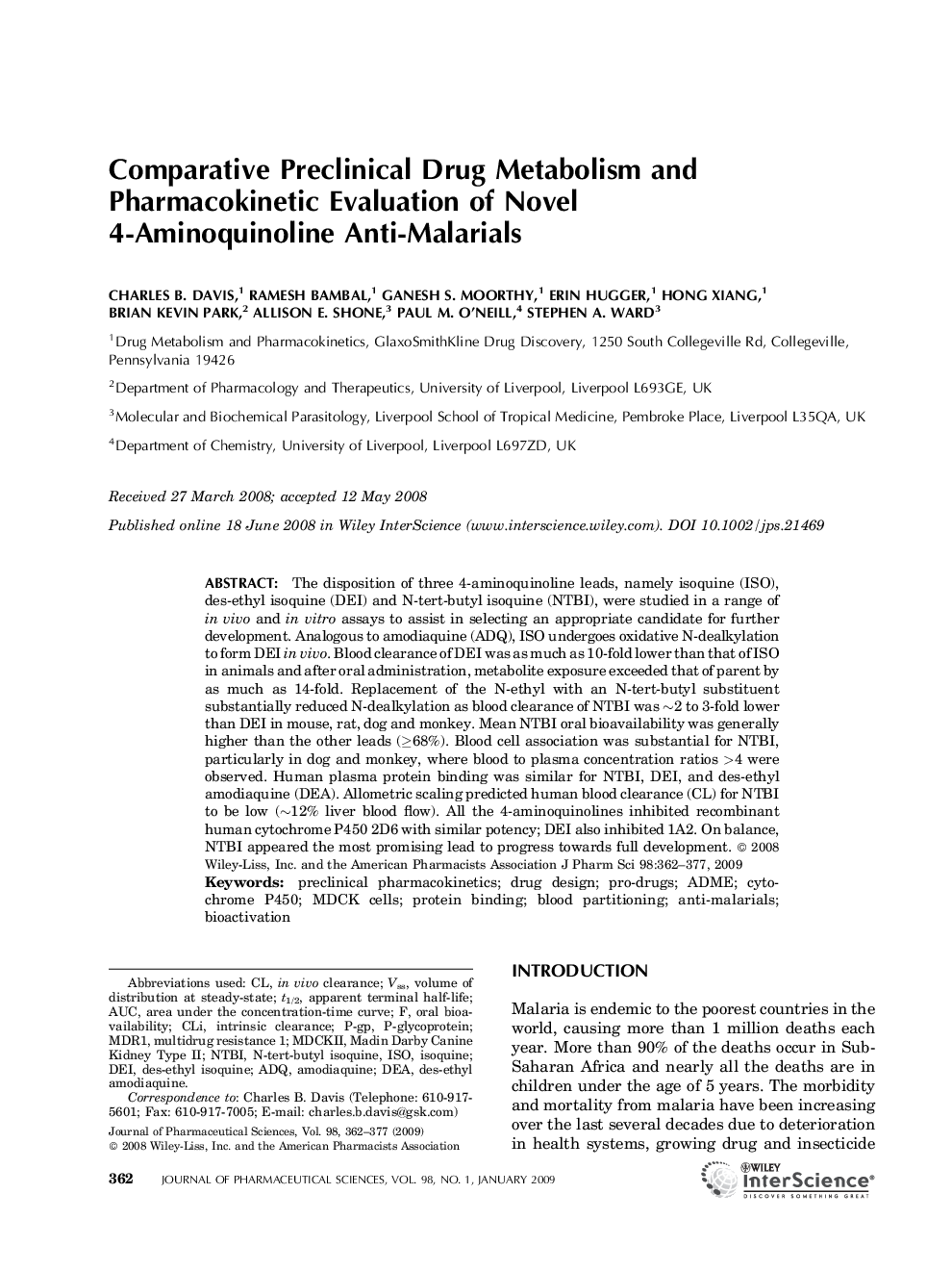| Article ID | Journal | Published Year | Pages | File Type |
|---|---|---|---|---|
| 2487238 | Journal of Pharmaceutical Sciences | 2009 | 16 Pages |
Abstract
The disposition of three 4-aminoquinoline leads, namely isoquine (ISO), des-ethyl isoquine (DEI) and N-tert-butyl isoquine (NTBI), were studied in a range of in vivo and in vitro assays to assist in selecting an appropriate candidate for further development. Analogous to amodiaquine (ADQ), ISO undergoes oxidative N-dealkylation to form DEI in vivo. Blood clearance of DEI was as much as 10-fold lower than that of ISO in animals and after oral administration, metabolite exposure exceeded that of parent by as much as 14-fold. Replacement of the N-ethyl with an N-tert-butyl substituent substantially reduced N-dealkylation as blood clearance of NTBI was ~2 to 3-fold lower than DEI in mouse, rat, dog and monkey. Mean NTBI oral bioavailability was generally higher than the other leads (â¥68%). Blood cell association was substantial for NTBI, particularly in dog and monkey, where blood to plasma concentration ratios >4 were observed. Human plasma protein binding was similar for NTBI, DEI, and des-ethyl amodiaquine (DEA). Allometric scaling predicted human blood clearance (CL) for NTBI to be low (~12% liver blood flow). All the 4-aminoquinolines inhibited recombinant human cytochrome P450 2D6 with similar potency; DEI also inhibited 1A2. On balance, NTBI appeared the most promising lead to progress towards full development.
Keywords
Related Topics
Health Sciences
Pharmacology, Toxicology and Pharmaceutical Science
Drug Discovery
Authors
Charles B. Davis, Ramesh Bambal, Ganesh S. Moorthy, Erin Hugger, Hong Xiang, Brian Kevin Park, Allison E. Shone, Paul M. O'Neill, Stephen A. Ward,
